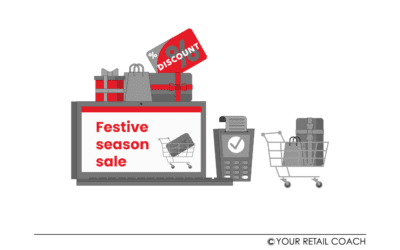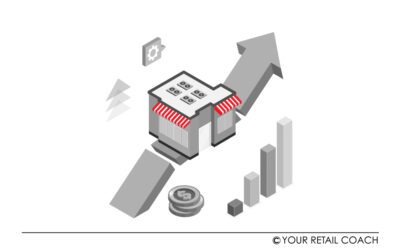Salon and Spa Industry
Unlike spa, salon is a more popular word. It connotes a place for body grooming and styling services. The purpose is to make people look better, stylish and presentable. The basic services offered include haircut, beard trimming, hair colouring and highlighting, face massage, shampoo, etc. Beauty parlours are inclined towards meeting the grooming and styling needs of women. However, such traditional demarcations have faded. The new-age salons have evolved to meet the needs of all.
But what exactly is spa? People intuitively know that salon and spa are different concepts. Now maybe the time we break the ice for some clarity. Spa refers to relaxing and body-healing external activities and experiences. Does that mean listening to music is spa? Yes, music has a healing effect on the body and mind. But spa goes beyond such simplicity. It includes services like Thai massage, aromatherapy, deep tissue massage, body scrub, manicure and pedicure, saunas, hydrotherapy, etc.
Since the last decade, the demand for spa services is rising consistently in the high tier cities. People are becoming increasingly aware of the benefits of spas. It is also a new phenomenon in many places making it worth a try. Urbanization and the growth of the middle class further contribute to its growing popularity. For the working-class people and the hectic urban lifestyle, spas provide the much-needed platform for relaxation and healing.
The demand for typical salon services is here to stay. What has changed is that new-age salons have embraced modernization. Many big cosmetic and personal care brands have come to the fore to partner with local salons and beauty parlours in the areas of marketing, training, product support, etc.
Salon and spa businesses need to correctly assess the existing and emerging needs of the market and customers. They will need to embrace modernization and manage their business more competitively. As an evolving industry with surging consumer demand, it is a time of opportunity for the service providers in this sector to make leaps. There will be challenges but there are solutions.
Challenges and solutions in the Salon & Spa Industry
Going omnichannel
Adopting the online channel must remain a top-notch prerogative for all salon and spa owners. Taking a business online in relevant ways helps in improving proximity with digital audiences and customers, spreading awareness about services and offers, offering AR-VR experience, easy booking of services, service management, etc. Going omnichannel means different things for different businesses. For a spa resort, it could mean having a website, facility for online booking and cancellations, or a virtual tour of the resort. For a salon or beauty parlour, a simple appearance on local search engine results pages displaying customer reviews, address, phone number, and working hours, helps in enhancing the local identity of the business and customer acquisition.
Importance of unique value proposition (UVP)
The basic services provided by salons represent some of the basic grooming needs of people. But there are also salon brands and businesses that go beyond the basics and touch the realm of luxury. The same cannot be said about spas. Services offered by spas are more of a luxury. The services require special setup and skills. Creating a UVP in salons and spas depends on this demarcation between luxury and not being luxury. The scope of UVP is limited for regular salons and beauty parlours without adding premium features or pulling in some features of luxury. As a luxury product, the opportunities are ample for spa businesses to cater to a niche market.
Retention of Talent
The demand for specialists is always high in the salon and spa industry. Consequently, businesses are people-dependent. The retention of experienced, efficient, and talented employees has always been a challenge. The right HR policies, accurate job profiles, robust reporting mechanisms, and people-friendly welfare policies play a vital role in employee retention and keeping attrition under check. Planned and defined HR Standard Operating Procedures (SOPs) and PMS are important for measuring the performance of employees and rewarding them as per rule.
Need for training and skill development
To attract new customers and retain existing ones, spa and salon owners must keep making improvisations in their business and services offered from time to time. Poor service experience turns away customers. It further creates poor word of mouth marketing. And to maintain and improve service expectations of customers and service delivery, training and skill development of employees are critical. Otherwise, employees will not be able to deliver services at par with the industry standards. However, training and development are not necessarily independent business activities. The need can also stem from strategic business moves. These can include the introduction of additional services, efforts to improve customer experience, incorporation of more stringent safety and hygiene standards, etc.
Never to cease at customer acquisition
Because salon and spa services are brick-and-mortar based businesses, it confines their market to the local limits. Any increase in the local population is also compensated by an increase in the number of competitors. New businesses come with better offerings that may pull away customers. Businesses must never take their existing customer base for granted and cease the efforts for customer acquisition. Customers bring more customers.
Routine profitability checks
Winning the numbers game each month does not mean a business is making excellent profits. It is critical to keep a check on the profitability of every branch at periodical intervals. Many brands and businesses delay the process of identifying the slow-moving branches until it nullifies the overall bottom line with the performance of the profit-making branches. If the business is to thrive, not merely survive, routine profitability checks must be done as per branch, products, and services.
Robust operational control
At the end of the day, the implementation speaks. When the business processes and operations are planned and mapped using SOPs, it provides the required roadmap for executing the operational activities. The procedures and the standards of performance and output to be followed and maintained become crystal-clear. There remains no room for ambiguity about authority and responsibilities. SOPs help salon and spa businesses become process-oriented. With robust operations, they are better poised for high performance in service delivery.
How YRC can help
Salon business consulting services | Spa business consulting services
Your Retail Coach (YRC) is a more than a decade old retail and eCommerce consulting enterprise offering high-end services to salon and spa businesses. We engage and maintain a professional team of salon and spa consultants in our business. Working with an expert business consulting firm makes a huge difference in setting up the foundation of a strong and sustainable business. Whether the requirement is to develop a luxury spa business plan or a premium salon business plan, our team of business plan development consultants carries the necessary expertise in both.
Market research is a part of our spa and salon business consulting services. The service planning and execution are done by a team of expert hair salon business consultants. The objective is to provide meaningful insights on the market and actionable information and recommendations for planning and strategy formulation.
In salon and spa business consulting services, we help clients see through the feasibility of their business ideas. We develop feasibility reports for businesses to assess the sustainability and competitiveness of their business models.
In omnichannel consulting, we work closely with clients to better understand their business objectives behind going omnichannel. We help them define their omnichannel strategies and provide the necessary follow-up assistance in the planning and implementation phases.
In operation-related services, we design and develop SOPs that help clients streamline and regulate their business processes and operations. It helps them achieve standardization across branches. Our long term goals in SOP development are to lend process orientation, operational consistency, and scalability.
To know more about our salon and spa business consulting services or if you have any queries for our team of salon and spa consultants drop us a message and we shall get back to you.
Let’s Talk!
Related Blogs
Making the most out of the festive season shopping: A Customer Perspective for Retailers
Decoding the Festive Shopping Spree For us, as customers, the festive season is a licence to spend. The vibes of festivity ushers with joy and a sense of celebration. This elevated mood often turns into an enhanced willingness to spend and indulge in shopping. It is a...
Mitigating Business Risks in Retail
Spotting the Swirls Sailing the stream of retail is canopying between opportunities on the surface and risks as the current of that stream. If the bad swirls are not spotted in advance, it can turn things undesirable. While big brands grapple with issues like lapses...
How Retailers are Enhancing Customer Experience (CX) with Hyper-Localisation
Hyper-localisation is an alignment strategy that helps retail brands and businesses mould into the requirements of a locality-based market environment. Marketing-wise, it helps retailers tailor their value propositions to cover the needs and expectations of highly...





We work only for Visionaries.